St Helena Tunnel: Australia’s First Synthetic Fiber Reinforced Road Tunnel
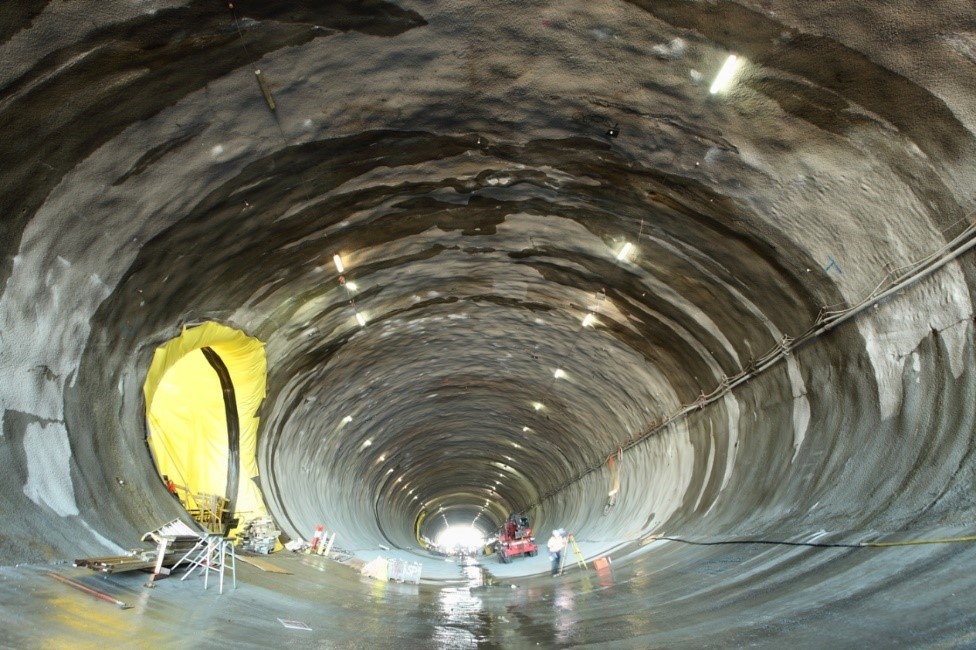
The First Macro Synthetic Fibre Reinforced Road Tunnel in Australia – BarChip Fibre Reinforced Shotcrete
Download the paper: Pacific Highway Updrade from Tintenbar to Ewingsdale (T2E), St Helena Tunnel, A.M. Mueller, 15th Australasian Tunnelling Conference 2014.
Australia’s St Helena road tunnel was constructed as part of the AUD$862 million Tintenbar to Ewingsdale (T2E) upgrade project, which rehabilitated 16.3 km of the Pacific Highway. Baulderstone, now Lend Lease, was chosen as the Designer and Contractor for this project, which is jointly funded by the New South Wales and Federal governments. The full T2E project comprised;
- 16.3 km of dual carriageway;
- 10 km of access roads;
- Nine bridge structures, three underpasses, two culverts;
- 3,200,00 m3 of bulk earthworks; and
- The 434 m long twin tube St Helena Tunnel
In an Australian first, the St Helena Tunnel used macro synthetic fiber as the primary reinforcement in the shotcrete lining of the tunnel. Given the long and successful use of BarChip fiber in Australian mines, no one on the project was surprised when they performed well and met all performance specifications.
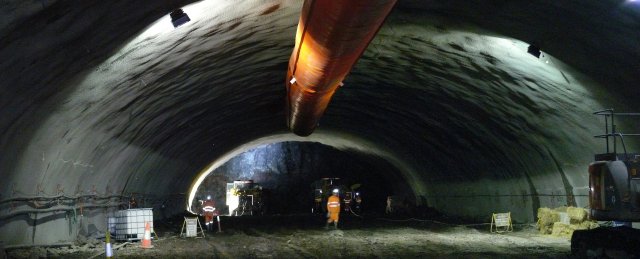
St Helena Tunnel was the highlight of the T2E upgrade project. Key tunnel details are;
- Twin tubes with 3 lanes in each direction;
- Each tunnel is 434 m long;
- Cut and cover at each end approximately 39 m;
- Cross passages every 120 m;
- A massive 210 m2 cross section to accommodate 3 lanes in each direction; and
- Barchip macro synthetic fiber reinforced shotcrete lining.
The tunnel was excavated primarily with the drill and blast method through high strength basalt rock as well as some deteriorated to weathered basalt and residual soil. Excavation was divided into three sections; heading, bench and invert.
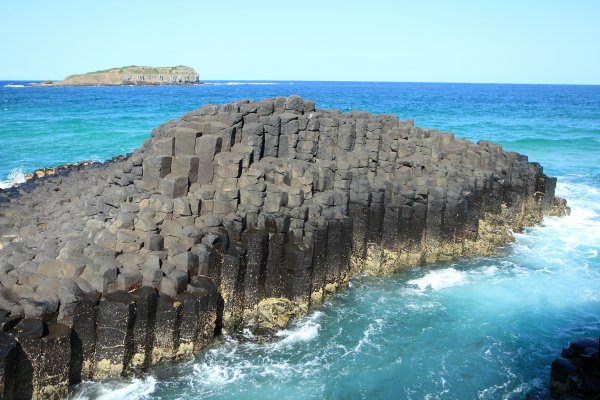
Typical Basalt Columns in the Region
To ensure worker safety temporary ground support was installed following every blast. Following a comprehensive geological review and with the findings of the Geological Interpretative Report (GIR), the designers developed a suite of six different support types. These included a combination of fiber reinforced shotcrete, rock bolts, spiling bar, lattice girders, and face nails.
The selection of the support type followed a set process which was outlined in a report presented at the Australian Tunnelling Society Conference 2014;
“The designer’s site representative, whose official title on T2E was Tunnel Geotechnical Representative (TGR), compared the in situ ground conditions with the design assumptions and he then assessed the monitoring results by relating them to the results of the structural analysis. Once the TGR completed his interpretation of the ground conditions he selected the adequate support type. As a formal direction to the construction team a Ground Support Instruction Sheet was handed over.”
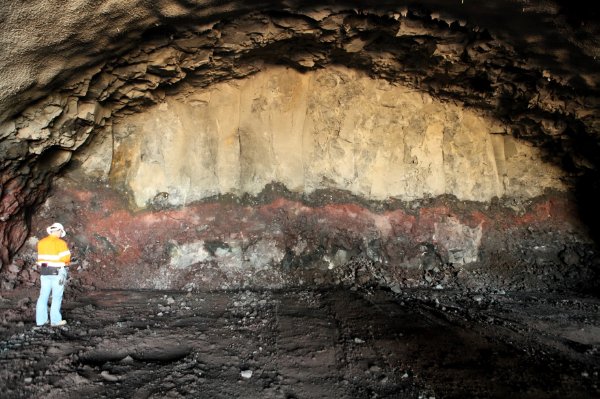
Basalt Layers
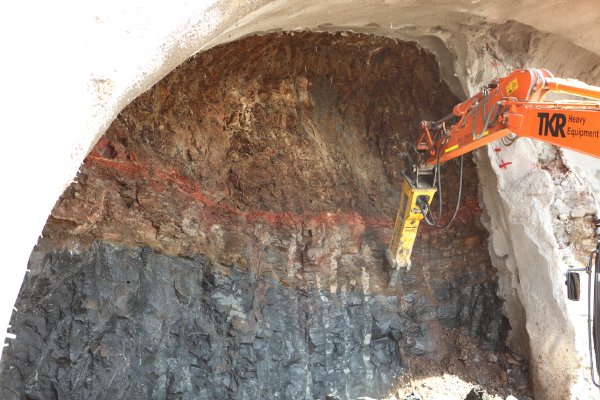
Weathered Rock Over Basalt Layers
This procedure was carried out before every phase of each excavation round. This process and the exhaustive care taken in choosing support for each excavation points to the tremendous culture of safety in Australian engineering and construction and should be applauded.
The shotcrete lining reinforced with Barchip’s macro synthetic fiber ranged in thickness from 100 mm to 300 mm depending on ground conditions. Rock bolts used were grouted steel bars in poor ground and split sets in competent ground. Spiling bars together with lattice girders were also used at the portals.
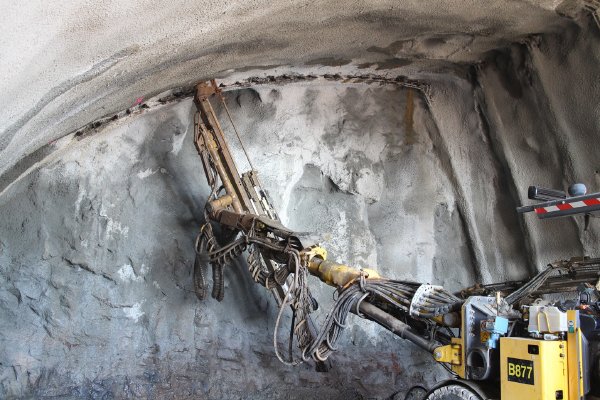
Shotcrete and Rock Bolts
The permanent lining of the tunnel is a 40 MPa cast in situ concrete lining with a 100 year design life. The lining is 500 mm thick in mined areas and 800 mm thick in cut and cover sections and is reinforced with bar and mesh.
While the St Helena Tunnel is not one of the longest tunnels in Australia it is notable for several reasons; it has one of the largest cross sections of any Australian tunnel, it massively decreased the infrastructure footprint in a vital tourism region, and it was the first Australian road tunnel to utilise macro synthetic fibers in the initial shotcrete lining.
Adopting BarChip synthetic fiber reinforced shotcrete delivered numerous benefits to the T2E project;
- Eliminated the installation of rebar resulting in increased development speeds and shorter construction times
- Improved site safety by ensuring no worker operated under unstable ground
- Enabled shotcrete to follow the irregular surface profile, eliminating surplus shotcrete often required for reinforcement cover, thus reducing costs accordingly
- Delivered reduced costs when compared to all other reinforcement systems
- Reduced carbon footprint by 70% compared to steel alternatives
Barchip is incredibly proud to have supplied the first synthetic fiber reinforced shotcrete lining in a road tunnel in Australia. St Helena was a major stepping stone to the Acceptance of BarChip in Australia, which has now been used in Sydney Metro, Melbourne Metro, Brisbane Metro, Forrestfield-Airport Link track slab, Brisbane’s Legacy Way Tunnel and the North Strathfield Rail Underpass.

